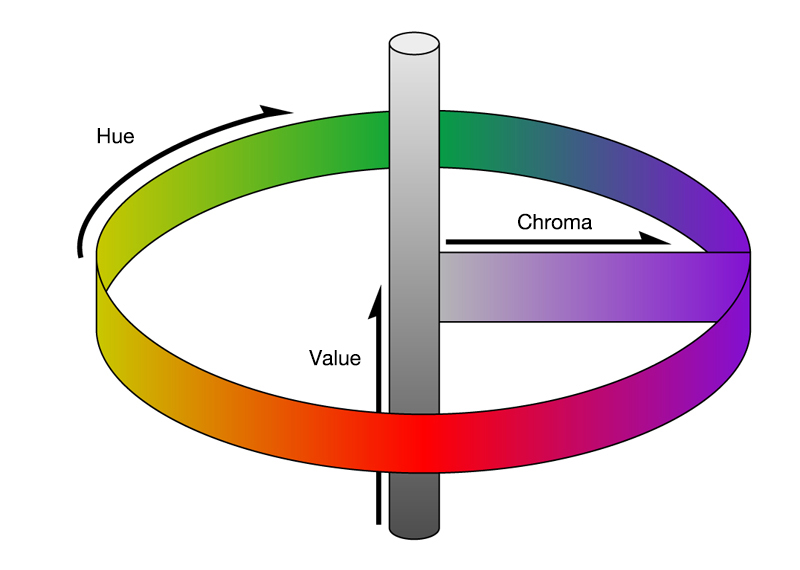Three Attributes of Color
色の三属性
Ironosanzokusei
CATEGORIES
Hue, lightness and saturation are referred to as the three attributes of color. The human eye perceives light that is absorbed and reflected by, or transmitted through, an object as color, but its appearance will differ according to the hue, lightness and saturation. As they are interrelated, it is not possible to express a specific color using just one of these attributes.
Hues are tints such as red, yellow, green and blue that define color. Tints vary in different light wavelengths. A hue circle is a chart of hues around a circle and is one method for organizing colors systematically. Saturation expresses the vividness of color. A vivid strong color has a high saturation and a dull weak color a low saturation. Colors with even the slightest saturation are referred to as chromatic colors while white, grey and black (colors with no saturation or hue) are called achromatic colors. Chromatic and achromatic colors both have dark and light colors. Lightness describes the degree of this variation in brightness. Lightness is closely related to the light reflection on the surface of an object. Among achromatic colors, the highly reflective white is bright (high lightness value) but black is dark (low lightness value).
The interrelationship of the three attributes of color can be represented three-dimensionally as a color solid. In a color solid, hues are positioned in a circle and the lightness is represented by the vertical axis in the center. The distance from the central axis to the outer circumference of the hue circle represents saturation.
* The chart shown is only an approximate display of the relationship between colors and is not an accurate recreation. Colors also appear different depending on the browsing environment.

